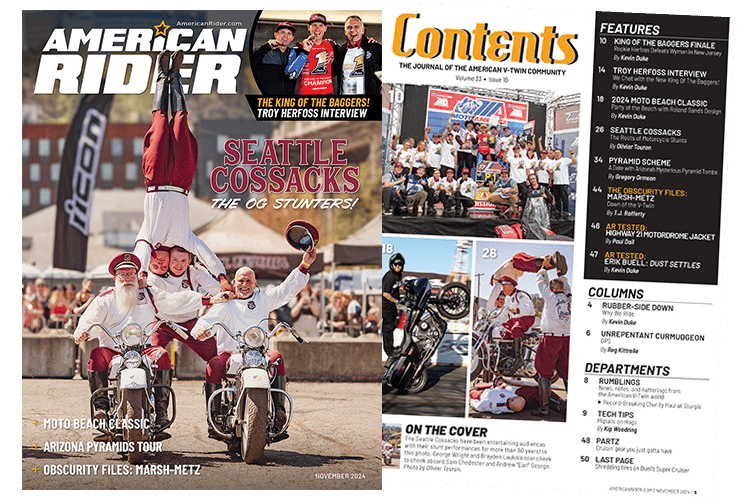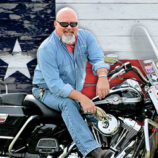“When a true genius appears in the world, you may know him by this sign, that the dunces are all in confederacy against him.” Jonathan Swift
What a dunce I’d been. Yes, I’m man enough to admit that I was among the ranks of the skeptics who doubted the genius of James Durham, a.k.a. Big Jim Red Cloud, the mastermind and ringmaster of the Hoka Hey Challenge. In my defense I’ll say that it was an easy role to fall into because, sadly, I’d been operating under tenets of the Old Morality that quaintly held honesty, factual accuracy and personal integrity to be, like, really good things. It was a hard habit to break, being a former altar boy and Eagle Scout and all, but I’ve gotten past it. Hallelujah, I’m free at last, and I’m indebted to Big Jim and the whole Hoka Hey Challenge for helping me see the light.
Back when I was still operating in the dark, I did a good deal of digging into the details of the Hoka Hey, the veracity of its claims, and the bona fides of its organizers. I wrote a skeptical piece about the whole deal in this column two years ago, and continued to research and follow developments for a time after that, but I was in over my head. The more I dug, the more I realized I was lost in a Fire Swamp of shifting narratives, shifting players and contradictory pronouncements issuing at lightning speed. The details of what was supposedly occurring changed so dramatically and abruptly that I essentially glazed over and moved on, suspecting that it would fail to launch in 2010 just like it had in 2009.
And when the 2010 Hoka Hey Challenge did actually take place, it bore little similarity to what had been promoted in a number of significant particulars from the distance of the event to the number of riders involved to the charities being benefitted to the monitoring and checkpoint procedures to the timing of the payout of the advertised $500,000 in “Alaskan gold.” The route maps were erroneous, a number of wrecks occurred, a couple of riders were killed, many others were injured, the fleet of transports that was supposedly being staged in Homer to truck bikes back to the lower 48 didn’t materialize, and no reality TV show was ever produced. And so on. A total of just 212 riders straggled in.
When the $500,000 ultimately did get disbursed, it quieted the accusations of outright fraud on the part of the organizers somewhat, but the howls of indignation and dark mutterings of legal action persisted, as did the scrutiny and criticism of a good many media outlets.
Poor souls. They just didn’t get it. They didn’t get that Big Jim is a genius and the master of his own small universe, his own personal rabbit hole where reality at any given moment is exactly what he says it is, and he gives no assurance that it won’t change in the next moment. It’s a place where it’s futile to cling to the past because there isn’t any. To Big Jim, the critics were nothing more than benighted little monkeys flinging poo at their handler.
Me, I flung no poo. I’d had my epiphany and realized that, where on the surface one might think they were witnessing a true sociopath in the fullness of his affliction, what one actually beheld was the emergence of a true prophet of the Misinformation Age where the truth is whatever you can get somebody to believe. This is the age we live in, one of padded resumes, rampant plagiarism, viral conspiracy theories, avaricious bankers masquerading as George Bailey, soulless insurance companies running heartwarming TV commercials while routinely denying legitimate claims, to say nothing of what the entire political process has devolved to. It is an age where the natural inclination to take a man or a corporation at their word is a weakness preyed upon wholesale.
Apparently, I wasn’t alone in seeing the truth, either. In spite of everything that had happened or not happened during the 2010 Hoka Hey Challenge, The Motor Company stunned the critics and pretty much everybody else familiar with the story by jumping in as a sponsor of a 2011 running of the event, putting the legitimacy of the Bar & Shield behind it, providing promotional support and bringing $50,000 in contingency prizes to the event to be awarded to the top finishing H.O.G. members. Fortunately for Harley’s promotional purposes, the working translation of Hoka Hey had morphed by then from, “It’s a good day to die,” to, “It’s a good day to ride.”
As it happens, it’s a good thing that Harley got involved, because it now appears that what they’re contributing may well be the only prizes awarded.
It’s the darnedest thing, but when the 2011 event concluded in September, and the course had covered 14,000 miles—4,000 miles more than originally announced, naturally—every last competitor who’d completed the run in the prescribed time frame was disqualified for failing a polygraph test. Apparently, they’d all exceeded the posted speed limit at some point, and since the Hoka Hey is emphatically not a race—it’s more of a sleep deprivation contest—the organizers reluctantly had to keep their half million bucks.
So nobody won and only 76 riders actually finished the event this year, but if you thought that minor details like that would resonate in Big Jim’s universe, you still don’t get it. On the contrary, Big Jim took the opportunity of his announcement of this year’s non-winners to further announce that the Hoka Hey will return for 2012. Graciously acknowledging the complaints about the absurd length of the 2011 course, he’s vowed—for what it’s worth—to shorten it next year to 7,000 miles. My guess is that it will be over water.
Hoka Hey, bitches. It’s a good day to swim.
It’s all right here in the diaries.
















